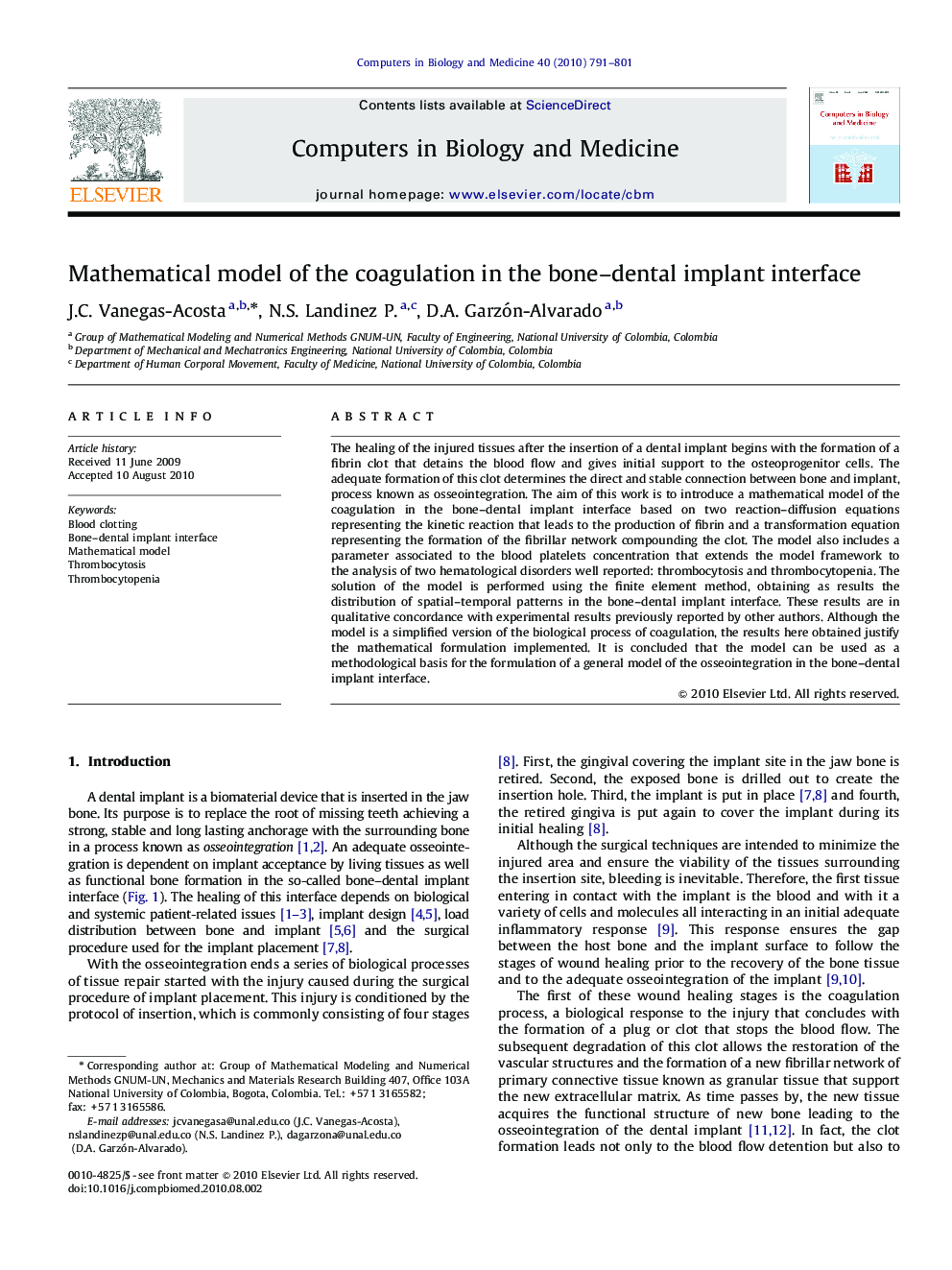| Article ID | Journal | Published Year | Pages | File Type |
|---|---|---|---|---|
| 505796 | Computers in Biology and Medicine | 2010 | 11 Pages |
The healing of the injured tissues after the insertion of a dental implant begins with the formation of a fibrin clot that detains the blood flow and gives initial support to the osteoprogenitor cells. The adequate formation of this clot determines the direct and stable connection between bone and implant, process known as osseointegration. The aim of this work is to introduce a mathematical model of the coagulation in the bone–dental implant interface based on two reaction–diffusion equations representing the kinetic reaction that leads to the production of fibrin and a transformation equation representing the formation of the fibrillar network compounding the clot. The model also includes a parameter associated to the blood platelets concentration that extends the model framework to the analysis of two hematological disorders well reported: thrombocytosis and thrombocytopenia. The solution of the model is performed using the finite element method, obtaining as results the distribution of spatial–temporal patterns in the bone–dental implant interface. These results are in qualitative concordance with experimental results previously reported by other authors. Although the model is a simplified version of the biological process of coagulation, the results here obtained justify the mathematical formulation implemented. It is concluded that the model can be used as a methodological basis for the formulation of a general model of the osseointegration in the bone–dental implant interface.
